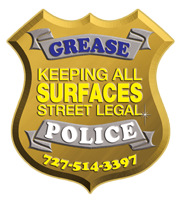Frequently Asked Questions
Answer: Dry ice blasting is similar to sand blasting, bead blasting, or soda blasting where a media is accelerated in a pressurized air stream (or other inert gas) to impact and clean a surface.
Answer: Most other blast media leave secondary waste behind. Dry ice sublimates (vaporizes) upon impact with the surface. All that remains is the contaminant you are removing, displaced from the substrate. Also, since dry ice vaporizes on impact, the process can be used to clean complicated cavities where typical grit blast media will become trapped.
Answer: Contaminants can be dry, wet, hard or soft. Dry contaminants will break up into small chips and can be swept up or vacuumed. If the particles are large enough, they do not become airborne. If the contaminant is wet such as grease or oil, the Cold Jet stream will move or push the liquid away much like a high pressure water stream would, except that the surface where the contaminant was will be dry and clean. To prevent re-deposition, the operator should work in a methodical way, from the top down.
Answer: Our dry ice blasting process will not damage the substrate. The size of the dry ice pellets and their velocity can be optimized to remove the contaminant while remaining non-abrasive to the substrate. Our process can clean delicate chrome or nickel plated tools, soft aluminum or brass alloys, wire insulation and even circuit boards without causing damage.
Answer: Yes. CO2 dry ice is safe to use in outdoor blasting applications.
Answer: Yes, with proper ventilation. Because CO2 is 40% heavier than air, placement of exhaust vents at or near ground level is recommended when blasting in an enclosed area.
Answer: Condensation occurs when the temperature of the substrate falls below the dew point. The dew point varies with climate and the daily weather patterns. When cleaning hot substrates, condensation will rarely occur because the temperature of the surface will stay above the dew point.
